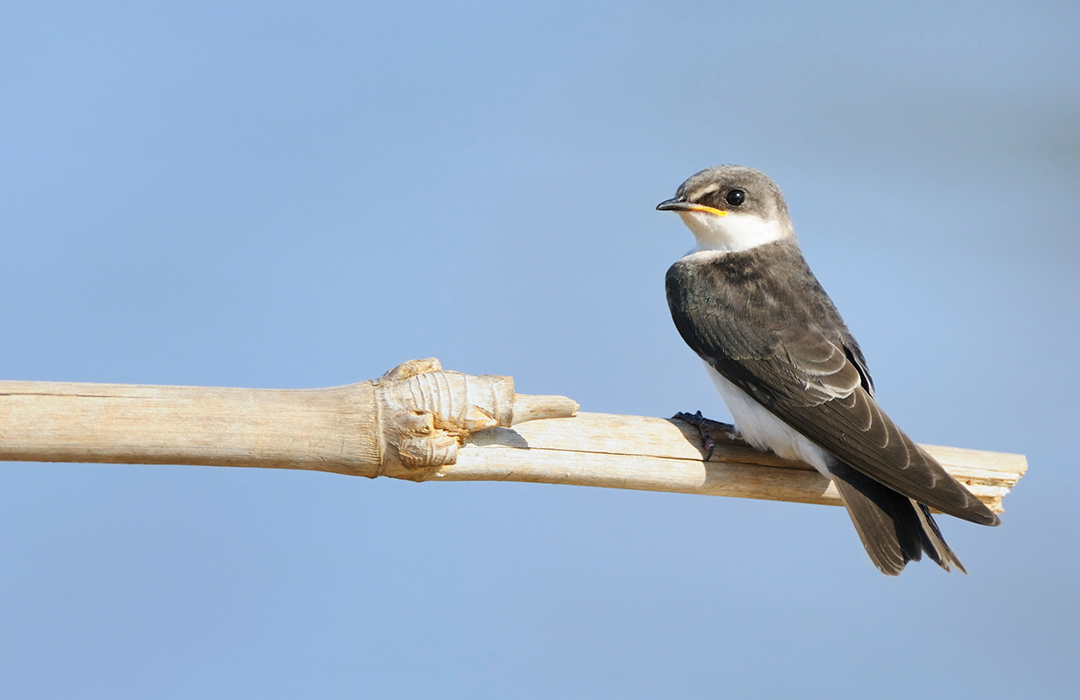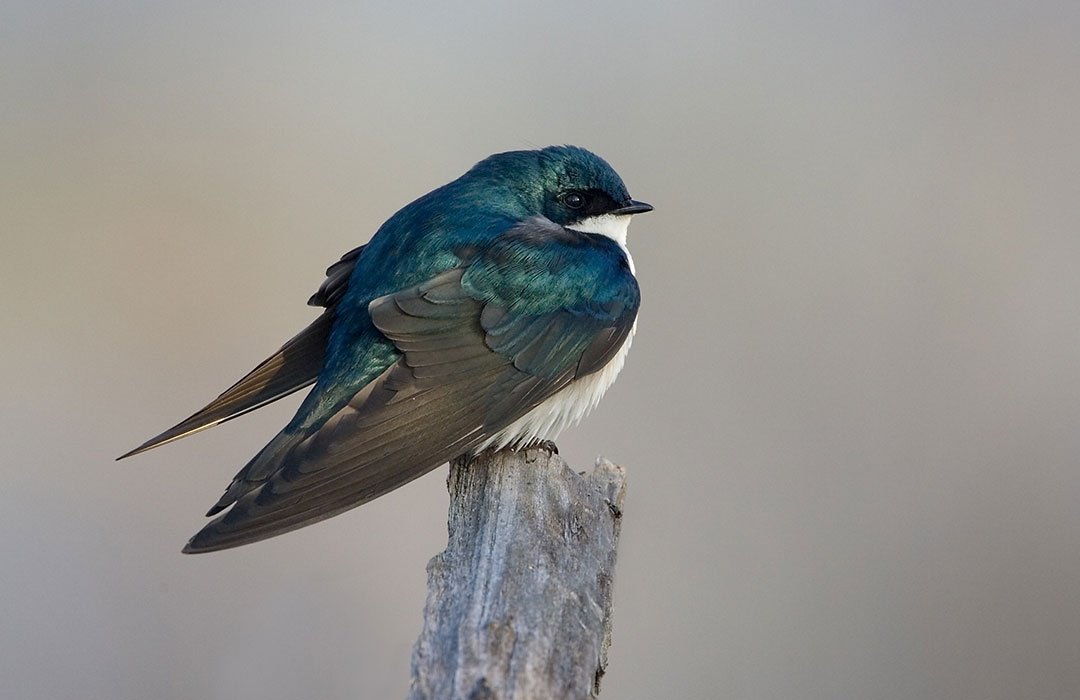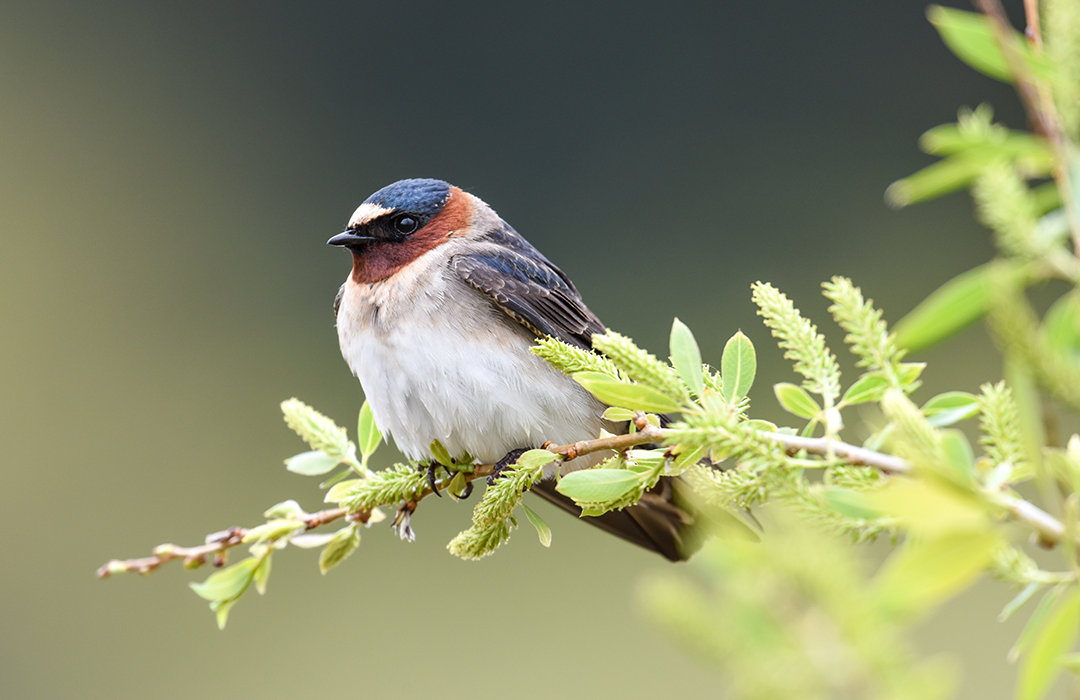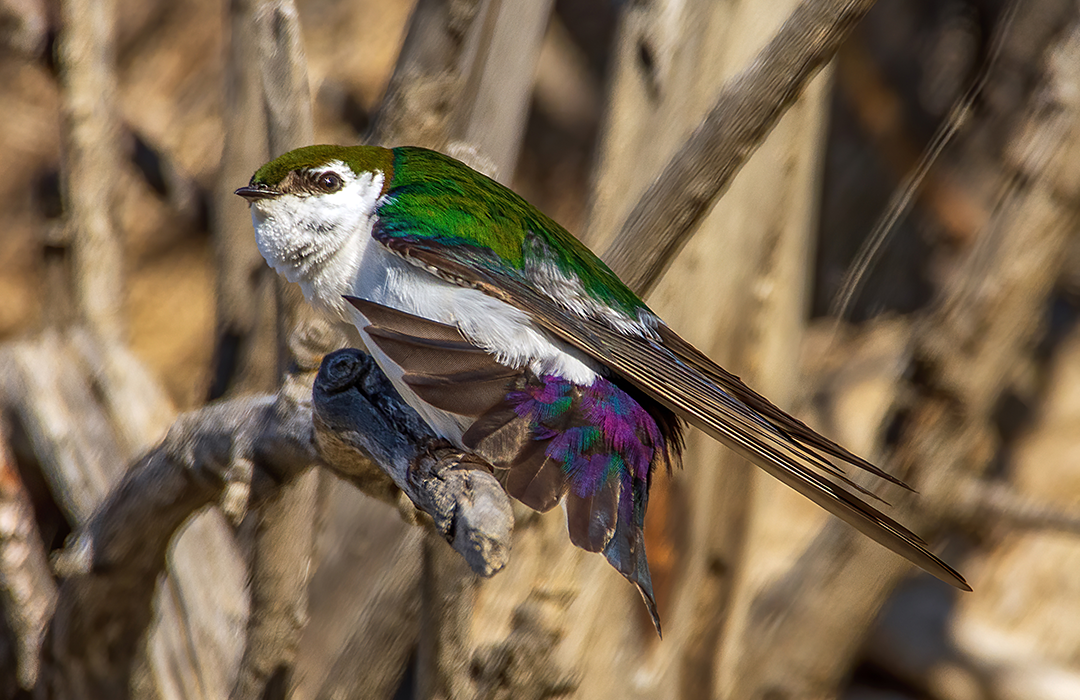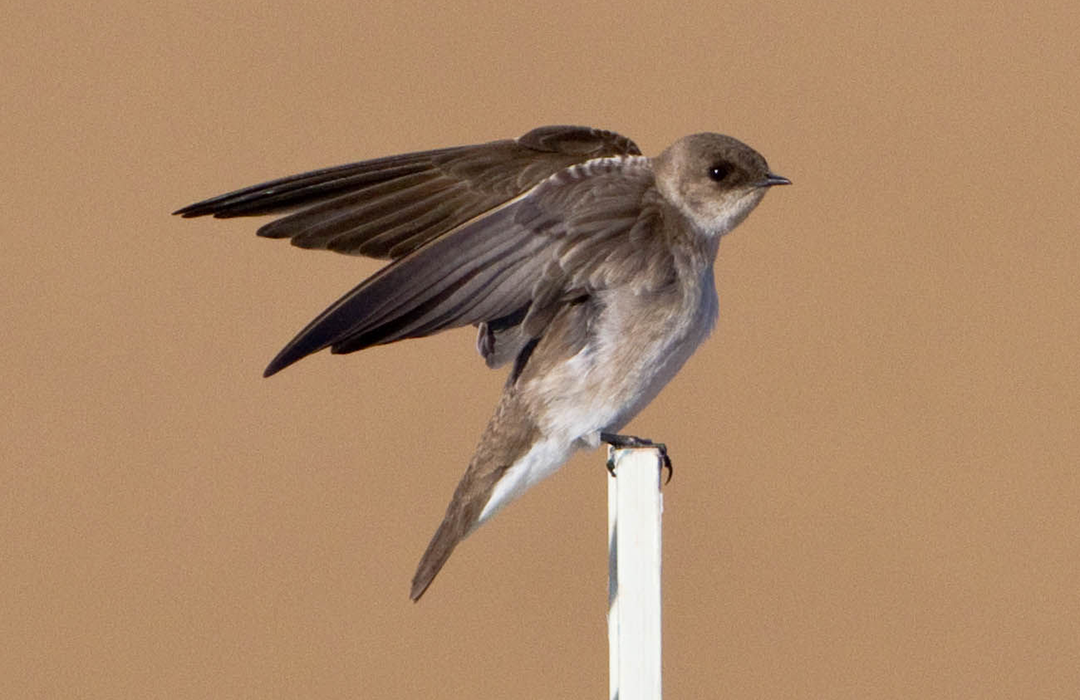Field Notes: All About Swallow Roosts!
A blizzard of birds! Seeing thousands of swallows returning to their overnight roost is an experience to remember. As part of the Save our Swallows Campaign, Nature Canada is working with its partners to monitor and protect these roosts.
About the program
It’s dusk at Dunnville Marsh in southwestern Ontario. An osprey surveys the marsh from the top of a dead tree, and small fish dimple the glass-smooth water. Two canoeists, gliding by the cattails, are starting to feel the mosquitoes. Suddenly dozens of swallows of different species are darting and swooping over the water. Soon there are thousands.
“It’s jaw-dropping.” That’s how Ted Cheskey, Naturalist Director at Nature Canada, describes this spectacle of twenty to thirty thousand swallows returning in a living gale to their overnight roost. “If more people could experience this,” says Ted, “they’d realize how amazing these roosts are—and how essential it is to protect them.”
Why we’re doing this work
Swallow roosts are where swallows congregate in large numbers—from hundreds to hundreds of thousands. The birds gather at these sites around sunset and disperse before sunrise.
Since these roosts form in late summer, after the breeding season has finished, they are called post-breeding roosts. They constitute a critical stage in the annual cycle of swallow species. The roosts are thought to provide security from predators due to the sheer number of swallows. For about a month, while the roosts last, the birds can fatten up on insects and prepare for their epic migrations to their wintering grounds.
These roosts tend to be found in wetlands such as marshes and swamps (though smaller roosts can be found in fields of tall crops like corn or sugar cane). Protecting these sites is vital, especially in Ontario, where all six swallow species have lost half their populations.
STAY IN THE KNOW
Subscribe for Updates
Join the Nature Canada online community today for campaign updates, advocacy opportunities, and more.
The Importance of Swallows
Like other birds, swallows are an indicator species: being easily observable and responsive to habitat change, they can tell us a lot about the health of the environment.
"A swallow is an owl that has been trained by the Graces. It is a bat that loves the morning light. It is the aerial reflection of a dolphin.”
—John Ruskin (1819 - 1900)
Swallows play an important role in the ecosystem by consuming flying insects, including agricultural pests. And of course, as graceful and acrobatic flyers, they add a touch of colour and wonder to our lives!
Unfortunately, as insect populations decline globally due to pesticide use and climate change, swallows are becoming more and more threatened. In fact, some swallow species such as the Purple Martin are not currently protected or listed under the Canada’s Species at Risk Act (SARA)—even though the species has lost over half of its population east of Saskatchewan, with an incredible 98-plus percent decline east of Ontario.
Storm on the Wing: Swallow Roosts and Weather Radar
Post-breeding swallow roosts only last a month, and don’t always occur in exactly the same place. Finding them can be a problem—which is where weather radar comes in.
Many of the roosts are so large that the departure of birds from them in the early morning hours can be seen as a rapidly expanding cloud. It was one of Nature Canada’s own staff members who spotted the“donut” or “croissant” shape on radar imagery and inferred a roost site. Tracking swallows on land is no easy task—they are speedy fliers—but we can now use publicly available weather radar to follow their flight.
We thank Burnbrae Farms for their generous support in making this video.
Dunnville Marsh: Inside a Swallow Roost
Mix land and water, add a bit of life-giving ooze, and you get impressive biological richness. The eight square kilometres of Dunnville Marsh (including open river channels) include a range of habitats that support a variety of species at risk.
Besides being biodiversity hotspots, wetlands like Dunnville Marsh provide critical “ecosystem services,” such as regulating water flow, limiting erosion and purifying water.
Since 2017, Nature Canada staff have monitored the roost site every year (except 2020, when COVID protocols prevented a visit). Our findings suggest that the site harbours all six swallow species found in Ontario. This makes it a particularly significant habitat, since these species have been undergoing rapid declines since the 1970s.
Dunnville Marsh is found within the traditional and unsurrendered lands of the Six Nations as well as the Mississaugas of the Credit First Nation. It is partially owned by the Grand River Conservation Authority; some areas are owned privately. Although the marsh is currently classified as a “Provincially Significant Wetland,” this does not protect it from certain development pressures, habitat disturbances or upstream pollution. Protecting this roost is important for the survival of tens of thousands of swallows.
Resources
Through the work and collaboration this project inspired, we have been able to compile resources to give you more information about the surveying and protection work that resulted.
Interested in learning more about some of the spectacular species to be found in non-breeding swallow roosts? Check out the reports and blog posts below!



